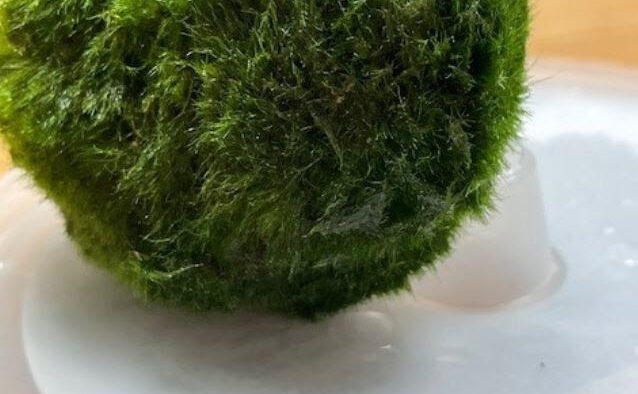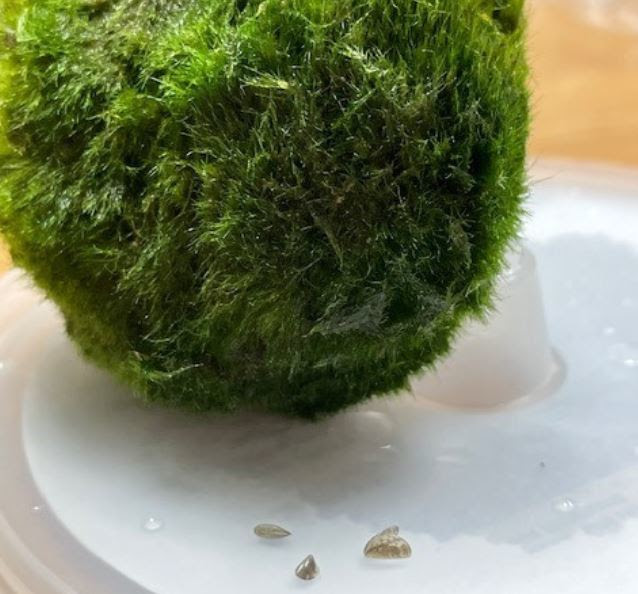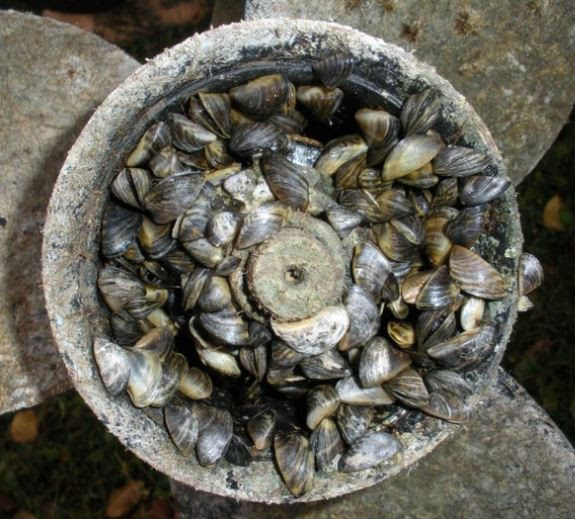Zebra Mussels found in Moss Balls
Share

Wildlife agencies across the country are urging pet stores and aquarium owners to take action now to contain any “moss ball” plants designed for aquariums. Invasive zebra mussels were found on these products, which are sold throughout the USA. This is a national invasive species emergency and an evolving situation.
Officials were alerted about this situation after reports from Washington state indicated zebra mussels were discovered attached to a moss ball plant at a local Petco store. The moss balls are a species of algae that form green balls up to a few inches in diameter and are sold as an aquarium plant under names such as:
- “Beta Buddy Marimo Balls”
- “Mini Marimo Moss Balls”
- “Marimo Moss Ball Plant.”
These moss balls may be sold separately or provided with the sale of Betta fish. These moss balls are believed to have been imported from the Ukraine, where the zebra mussels are a native species, and distributed across the U.S.

Photo courtesy of IDFW/USFWS.
What Risk Do Zebra Mussels Pose?
Zebra mussels are invasive freshwater mollusks. They are small, but very destructive. They are similar to invasive quagga mussels. Both can quickly become established in a waterbody and cause millions of dollars in damage to boats and water intake pipes while creating significant ecological harm to native mussels, fishes, and other aquatic wildlife.
Zebra mussels can quickly multiply in freshwater sources. Since they are so small, those that have been distributed with the moss balls can be easily overlooked.
The larval life stage of the mussels (veligers) are microscopic. The water the moss balls are in can contain viable veligers and adult mussels, which if released into waters can have devastating consequences.
“Zebra mussels can pose a significant risk to Arizona’s waters, so we urge anyone who may have recently purchased these products to follow disposal directions and most importantly, not to release the plants, mussels, or contaminated water into any drain or water source including streams, canals, ponds, and lakes” said Julie Carter, AZGFD Aquatic Wildlife Branch Chief.

Photo courtesy of USFWS
DESTROY, DISPOSE, DRAIN
Game and Fish Departments urge anyone that purchased the moss balls from any retailer to Destroy! Don’t Dump!
DESTROY in one of three ways:
- Freeze – Place the moss ball into a sealable plastic bag and freeze for at least 24 hours.
- Boil – Place the moss ball in boiling water for at least 1 full minute.
- Bleach or Vinegar – Submerge the moss ball in chlorine bleach or undiluted white vinegar for 20 minutes.
DISPOSE by…
Placing the moss ball and any of its packaging in a sealed plastic bag in the trash.
If vinegar, boiling water, or bleach was used to DESTOY, the liquid can be disposed of down a household drain—never down a storm drain, where it could enter and damage local waterways.
Do not dispose of the moss balls in drains, waterways, or gardens.
DRAIN the aquarium.
Collect any fish or other living organisms and place them in another container, with water from a separate, uncontaminated water source. Sterilize the contaminated aquarium water by adding ¼ teaspoon bleach for each gallon of water. Let the water sit for 10 minutes and then dispose of the sterilized water down a household drain.
CLEAN the aquarium
Clean the aquarium and accessories using one of the following methods, ensuring that the disposal method you choose is in accordance with manufacturers’ recommendations:
- Hot Water Method:
- Use water that is 140 degrees F to flush and coat the tank and all accessory surfaces for at least one minute, OR
- Disinfection Method:
- Submerge the moss ball in 1 cup of chlorine bleach per gallon of water for 10 minutes or undiluted white vinegar for 20 minutes.
- Soak the aquarium, substrate, rocks, décor, and filter media in the bleach water solution for 10 minutes.
- Rinse off all items prior to setting up the aquarium.
- Dispose of the previously used filter media and replace with new media.
- Use a dechlorinating product to neutralize any residual chlorine prior to reintroducing aquatic life.
It is recommended that you do another water change within a week and continue to monitor the tank for any unusual or unexpected aquatic life.
For more detailed instructions, visit the U.S. Fish and Wildlife Service website.
Guidelines for Pet Industry
Pet stores are urged to remove the product and any aquaria that have come into contact with the moss balls and quarantine them until further notice. Local Game and Fish Departments are working closely with other agencies to remove the product from shelves until the best course of action can be taken.
Additional guidance for the pet industry is in development and will be released soon.
For more information on invasive mussels and other aquatic invasive species, visit www.azgfd.gov/AIS.










